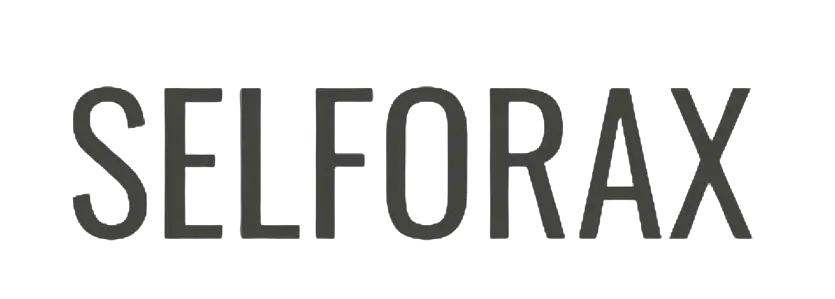Somatic breathwork isn’t just a mere exercise; it’s a holistic approach to healing.
Integrating deep, rhythmic inhalations and exhalations, empowers us to foster a deeper connection with ourselves.
This powerful tool is more than just breathing – it’s an exploration of the subtle ways our emotions and experiences resonate within our physical selves.
Understanding Somatic Breathwork
Somatic breathwork bridges the gap between the mind, body, and spirit through conscious breathing.
It’s a holistic approach, meaning it aims to support our entire being—all through the power of the breath.
Definitions and Origins
Somatic breathwork, a term that sometimes mystifies even seasoned wellness enthusiasts, is essentially a practice that encourages awareness of the body’s sensations through intentional breathing techniques.
The word “somatic” comes from the Greek word “soma,” meaning the living body in its wholeness. Historical roots of somatic practices can be traced back to ancient Eastern traditions, but it’s been revitalized in modern times as a holistic method to promote well-being.
Core Principles of Somatic Breathwork

Key Components:
- Body-Awareness: Tuning into physical sensations.
- Conscious Breathing: Controlled breathing to influence our state of being.
In somatic breathwork, emphasis is placed on noticing the breath and how it interacts with our physical form.
By focusing on controlled inhalation and exhalation, we open the door to a deeper connection between our physical and emotional landscapes.
The process serves as a bridge, linking the conscious to the subconscious, allowing us to access deeper realms of self-healing and realization.
The Science Behind Breathwork
I’ve found that somatic breathwork isn’t just about taking deep breaths; it’s a well-researched practice that can significantly affect our body and mind. Let’s explore the intricacies of its scientific underpinnings.
Physiological Effects
Breath plays a pivotal role in the body’s response to stress and anxiety.
When I practice somatic breathwork, my heart rate and blood pressure can lower, stemming from the body’s physiological adaptations.
It’s refreshing to feel the physical tension release as muscle relaxation kicks in, which is a direct benefit of controlled breathing exercises.
Impact on the Autonomic Nervous System
The autonomic nervous system, which includes the sympathetic and parasympathetic nervous systems, is crucial for stress management.
Somatic breathwork allows me to tap into my parasympathetic nervous system—the peacekeeper that promotes relaxation.
On the flip side, it downgrades the fight-or-flight response from the sympathetic nervous system, associated with stress. It’s fascinating to experience how intentional breathwork can swing the balance in favor of stress reduction, enhancing my sense of calm and well-being.
Breathwork Techniques

Somatic breathwork has transformed the way I manage stress and stay present. It’s about tapping into our body’s innate wisdom through various breathing techniques, including breath awareness and deep breathing.
Diaphragmatic Breathing
Also known as abdominal breathing, this technique involves fully engaging the diaphragm, a large muscle at the base of the lungs.
Here’s how I do it: I breathe in slowly through my nose, feeling my stomach expand, and then breathe out through my mouth as my stomach falls. This creates a sense of deep relaxation.
Circular Breathing
This technique allows for continual breathing without interruption, often used in playing wind instruments.
I mastered this by gently inhaling through my nose and then exhaling through pursed lips while using my cheeks to maintain airflow. It took practice, but eventually, I was able to maintain a steady, uninterrupted rhythm.
Box Breathing
Box breathing, also called square breathing, involves four equal parts: I inhale, hold the breath, exhale, and then hold again, each for a count of four.
This has been a game-changer for maintaining focus during high-pressure moments.
4-7-8 Breathing Technique
Lastly, the 4-7-8 technique is surprisingly simple but powerful. I breathe in for 4 counts, hold my breath for 7 counts, and exhale for 8 counts.
This not only improves my breath awareness but also helps me fall asleep faster during restless nights.
Benefits of Somatic Breathwork
Somatic breathwork is a transformative practice I’ve found to significantly enhance my well-being. By consciously regulating my breathing, I’ve experienced a range of benefits from emotional to physical health improvements.
Emotional Balancing
Through somatic breathwork, I’ve learned to better manage my emotions. This practice aids in the release of trauma, leading to improved emotional health and a more balanced mood.
It allows me to address feelings that are tied to past experiences, contributing to a greater sense of emotional well-being.
Reducing Physical Tension
I’ve noticed that regularly engaging in somatic breathwork helps reduce physical tension and alleviate chronic pain.
By focusing on my breath, tension dissipates, which can also improve sleep quality and promote healing of the body.
Enhancing Mental Health
One of the key benefits I’ve observed is the positive impact on mental health. Somatic breathwork enhances my attention and focus, which in turn helps lower my anxiety levels and improve my overall mental well-being.
Promoting Deep Relaxation
This practice is a gateway to deep relaxation. When I perform somatic breathwork, my stress levels reduce significantly, leaving me feeling energized and profoundly relaxed.
It fosters a tranquil state that is not only beneficial for my mind but also fosters improved physical health.
Practical Applications
I’ve found that somatic breathwork isn’t just a breathing technique—it’s a versatile tool that can deeply enrich various facets of our lives.
It’s not just about taking deeper breaths; it’s about integrating conscious awareness into therapy, personal growth, and physical movement.
Therapy and Recovery
In therapy and recovery, somatic breathwork is a therapeutic modality that supports emotional release and transformation. It’s a way for people, including myself, to work through trauma and stress.
Self-Awareness and Inner Work

The journey of self-awareness and inner work is greatly aided by the practice of somatic breathwork. It’s a method of meditation and mindfulness that enhances my practice.
With each breath, I deepen my connection to inner experiences, fostering growth and self-awareness, and allowing for a richer experience of personal growth.
Movement and Exercise
Integrating somatic breathwork with movement and exercise has been transformative.
During yoga or even gentle stretching, conscious breathing helps harmonize my movements with my mind, enhancing the exercise experience. It acts as a bridge, connecting the mindfulness of meditation with the physicality of movement.
Integrating Somatic Breathwork
Incorporating somatic breathwork into my life has been transformative. It allows me to harness the power of my breath, promoting a deeper sense of calm and awareness throughout my day.
Here’s how I make it part of my routine.
Daily Routine
I start my mornings with a 10-minute breath-focused meditation. This practice sets a tone of mindfulness that stays with me, enhancing my focus and presence.
I use my breath to navigate the day’s challenges, turning to brief moments of intentional breathing to maintain a balanced state.
Stress and Anxiety Management
When stress and anxiety creep in, I rely on somatic breathwork as a powerful tool for stress reduction.
Deep, slow breaths activate my body’s relaxation response, helping me release tension and find a peaceful center.
Before bedtime, this contributes significantly to improved sleep quality, inviting relaxation that fosters restoration.
Spiritual Practices
Somatic breathwork has deepened my connection to my spiritual practices. By integrating breathwork with meditation, I’ve noticed an expansion in my personal growth and a strengthening of my holistic practice.
This blending of breathing and spiritual focus elevates my experiences, allowing for profound moments of transformation and healing.
Community and Support
Engaging in somatic breathwork can be a transformative experience, and I’ve found that doing it within a supportive community enhances its benefits.
Sharing this journey with others provides motivation, shared experiences, and a sense of belonging as we explore the deep connection between our bodies and minds.
Joining Workshops and Classes
Workshops and classes are an excellent way to immerse myself in somatic breathwork and learn from experienced facilitators. These structured sessions often offer a range of techniques and the opportunity to practice introspective breathwork™ in a guided, group environment.
Finding Facilitators and Guides
For personalized direction, I seek out certified somatic breathwork practitioners. They provide expert guidance, ensuring that my practice is safe and beneficial.
Building a Personal Support Network
In addition to workshops and facilitators, I cultivate a personal support network. This might include fellow breathwork enthusiasts or friends interested in similar practices.
Research and Studies
In exploring the realm of somatic breathwork, I’ve come across fascinating studies that concretely assess its impacts on health.
Clinical Findings on Breathwork
Recent research has established somatic breathwork as a valuable practice. For instance, one meta-analysis published in Nature highlights the effectiveness of therapeutic breathwork in managing stress and improving mental health.
Another study centered on the DSM-5 criteria found that breathwork interventions can significantly aid adults with anxiety disorders.
Evidence-Based Benefits
The benefits of somatic breathwork, such as slower respiratory rate and improved oxygen exchange, are well-supported by science.
A systematic review noted the psycho-physiological correlations of slow breathing, implying that controlled breathing can substantially influence mental states and bodily functions (How Breath-Control Can Change Your Life).
Advanced Topics in Breathwork
I’ve experienced firsthand how somatic breathwork can rapidly shift my state of consciousness and promote profound self-awareness.
Holotropic and Transformational Breathwork
Holotropic Breathwork, developed by psychiatry experts Dr. Stanislav and Christina Grof, is designed to achieve healing and wholeness by accessing a non-ordinary state of consciousness through accelerated breathing, evocative music, and a specific kind of presence.
It’s a powerful avenue for personal insight, passion rekindling, and deep emotional release.
Transformational Breathwork goes beyond to leverage our breath’s capacity to release physical tension and foster emotional recovery.
It combines sustained, rhythmic breathing patterns that help facilitate a grounded and transformative experience, swiftly ushering in a state of conscious awareness and emotional clarity.
Therapeutic Techniques

Therapeutic breathwork employs various breathing techniques to address and alleviate an array of psychological conditions.
By consciously altering our breathing pattern, we can influence our emotional state, steering towards a more balanced and centered demeanor.
Strategies include integrating therapeutic principles such as conscious connectivity to the body to unearth and address suppressed emotions and traumas.
This deliberate practice is a testament to breath’s underrated therapeutic qualities.
Resources and Continuing Education
As a somatic breathwork enthusiast, I’ve found that deepening my practice through continuous learning has been vital.
Whether you’re a beginner or a seasoned practitioner, these resources and educational opportunities can fuel your growth and passion for this transformative field.
Books and Literature
Books:
- The Breathing Book by Donna Farhi
- Breathwork: A 3-Week Breathing Program by Valerie Moselle
Literature:
- Scholarly articles on breathwork therapy
- Latest research findings in somatic practices
Online Communities and Forums
Forums:
- Somatic Breathwork Practitioner Groups on social media
- Dedicated discussion boards for breathwork techniques
Communities:
- Online collectives where professionals share insights
- Interactive webinars and live Q&A sessions with experts
Certification Programs
- Online Somatic Breathwork Certification Training offers comprehensive modules for becoming an embodied practitioner.
- For a focus on the application in a clinical setting, consider programs like the one provided by the One Breath Institute.
- Somatic Breathwork Certification spans 12 weeks of LIVE training, with over 25 hours of interactive learning.
- To combine breathwork with trauma recovery, the Breathwork for Recovery program includes an 800-hour certification that qualifies for CE hours.
My opinion on the somatic breathwork
In exploring the practice of somatic breathwork, I’ve found it to be an intriguing approach to stress relief and emotional regulation.
It’s a method that intertwines the awareness of the body’s sensations with controlled breathing patterns. This synergy aims to foster relaxation and healing from within.
Frequently Asked Questions – Somatic Breathwork
When should I not do breathwork?
It’s crucial to be aware that breathwork isn’t for everyone. If you have a history of cardiovascular issues, are pregnant, or have severe psychiatric conditions, check with a healthcare professional first. Intense breathing practices can sometimes trigger physical and emotional responses that require support.
What happens during somatic breathwork?
During a session, you will engage in controlled breathing patterns often combined with movement or meditation. This process can initiate a response from your parasympathetic nervous system, guiding your body into a state of relaxation and healing.
What are the benefits of somatic breathing?
The benefits of somatic breathing are numerous, including reduced stress and anxiety, improved emotional balance, and enhanced mindfulness. The connection between controlled breathing and your body’s relaxation response is key to these benefits.
If you liked this blog post about the topic: Somatic Breathwork, don’t forget to leave me a comment down below to tell me about your experience with it. Or have a look at my other articles:






[…] Somatic Breathwork: Body-Centered Breathing Techniques 2024 […]